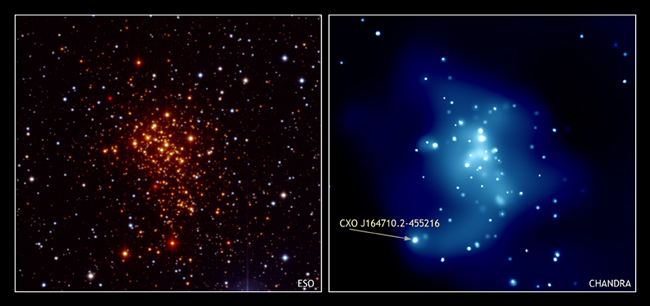Westerlund 1: A dense cluster of young stars about 16,000 light years from Earth.
Caption: Several of the stars in Westerlund 1 (optical image left) have the mass of about 40 suns, which means that they will race through their evolution and form neutron stars or black holes in a few million years. A search of the cluster with Chandra (X-ray image right) found no evidence of black holes. However, astronomers did find a neutron star (CXO J164710.2-455216). Because extremely massive stars evolve more rapidly than less massive ones, and the progenitor of the neutron star has already exploded as a supernova, it must have had a mass greater than 40 suns. This discovery may severely limit the range of stellar masses that lead to the formation of stellar black holes.
Chandra X-ray Observatory ACIS Image
|


